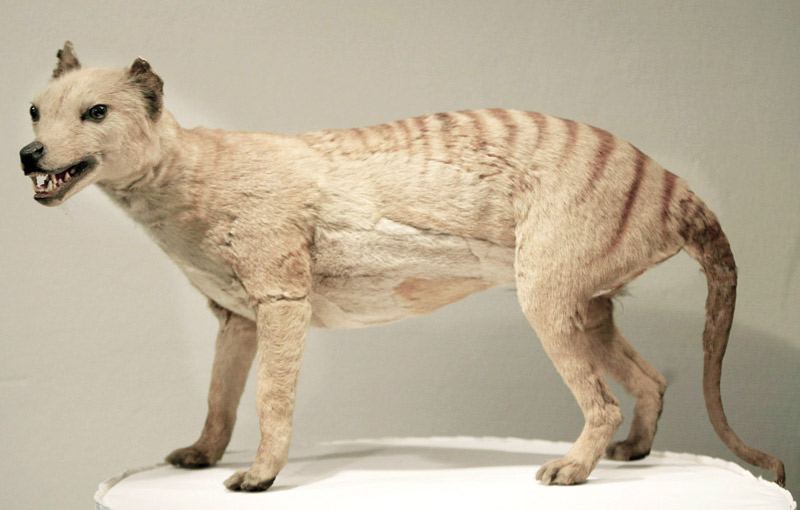

Climate change was most likely responsible for the extinction of the Tasmanian tiger from Australia some 3,000 years ago, a study revealed on Thursday. The climate change, which started 4,000 years ago, was particularly driven by a greater tendency for more drought-prone seasons due to the “El Nino-Southern Oscillation” phenomenon, linked to changes in ocean and atmospheric heat, according to the study by the University of Adelaide’s Centre for Ancient DNA, published in the Journal of Biogeography.
Known as a tiger-like species (but not related to tigers) because of its striped lower back, the Tasmanian tiger or thylacine used to inhabit areas of continental Australia and the island of New Guinea, reports Efe news.
However, when Europeans arrived in Australia in the 18th century, the population of this animal was concentrated on the island of Tasmania, southern Australia.
As thylacines were blamed for attacking livestock, an intense hunting campaign was launched between 1830 and 1909 and encouraged by rewards, which subsequently contributed to the extinction of what is considered to be the largest terrestrial predator on the Australian continent in modern times.
Tasmanian tigers, about the size of a large dog, became extinct 81 years ago when the last one died in captivity at the Hobart zoo on September 7, 1936. The animal, called Benjamin, was by mistake locked out of its sheltered sleeping area and died from the cold. There are people who claim to have seen Tasmanian tigers in the wild in recent years, but no scientific proof of any remaining animals have been provided.
“But the reasons for its disappearance in mainland Australia and its continued survival in Tasmania remain a mystery,” Jeremy Austin, research coordinator and deputy director of the Centre for Ancient DNA, said in statement.. — IANS
Oman Observer is now on the WhatsApp channel. Click here



